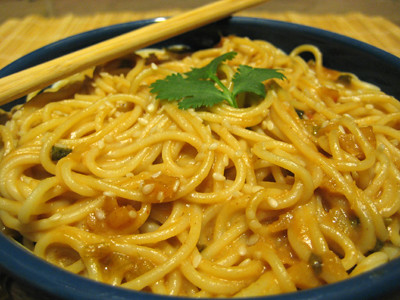
I had a lovely lunch on Friday with Denmark's reigning "crime queen," Sara Blædel, to celebrate the acquisition of her books for the American market. I decided to take her to the 21 Club in midtown, very "Americana" and a New York classical, although I will come right out and say it: the food is WAY to rich and buttery. It is a favorite of Vronsky's family, so I eat there a fair amount, usually around the holiday season, but lord did I forget about that little tidbit. Everything there has butter, and too much of it at that. The Dover sole was swimming in it. My vegetable risotto was so oily with it it wasn't even clumping up. The burger is literally marinated in it. It's a shame, but I always walk away from there feeling slightly nauseous, although my plum-almond tart was a shining gastronomical delight on the whole affair.
To top off the fact that Sara is an incredibly delightful, charming woman (she and her husband, Lars, could charm the fur off a dog), she brought me a huge bag full of traditional Danish food after hearing through her agent that I ran this here little blog. It was the sweetest gift I'd ever gotten and I dove into this veritable bag of goodies the minute I got home and my meal of butter had subsided.
 This bag was like Mary Poppin's carpet bag. Lovely things just kept coming out! A box of chocolates from a Copenhagen chocolatire, some Danish gummy candies, two huge jars of delicious pickled herring (which you MUST eat with slices of raw onion), lovely smoked salmon, and a loaf of thinly sliced black rye bread on which to eat said herring and salmon, and some Akvavit (a strong liquor drink served EXTRA cold).
This bag was like Mary Poppin's carpet bag. Lovely things just kept coming out! A box of chocolates from a Copenhagen chocolatire, some Danish gummy candies, two huge jars of delicious pickled herring (which you MUST eat with slices of raw onion), lovely smoked salmon, and a loaf of thinly sliced black rye bread on which to eat said herring and salmon, and some Akvavit (a strong liquor drink served EXTRA cold).Pickled herring has been a traditional Danish staple since the Middle Ages, and to this day, it is traditional to have some pickled herring (with onions atop Danish-style rye) for Christmas lunch before any hot dish is served. Herring is referred to as the "gold of the sea" and is also very popular when smoked (but doesn't travel as well as the smoked salmon).
And a note about this Danish rye bread: it is the only thing with which the traditional Danish open faced sandwich (smørrebrød) can be served. It is incredibly dense and sliced very thin and takes more than 24 to prepare and bake. It has a strong smell but it sets of the saltiness and
 "slimy" texture of the fish to perfection. Don't get me wrong...I love smoked salmon and pickled herring, but it definitely has its own "unique" texture.
"slimy" texture of the fish to perfection. Don't get me wrong...I love smoked salmon and pickled herring, but it definitely has its own "unique" texture.Vronsky and I already worked our way through one packet of smoked salmon and half a jar of the pickled herring the next day (I ran out to Trader Joe's and got a giant onion) during the Bowling Green-Michigan game (21-65 Michigan, whee!!). Nothing like a super salty, omega-3 laden brunch to off set Vronsky's birthday party festivities from the night before...I think a trip to Copenhagen is now in order!
But where to find such yummy things in NYC when I've depleted Sara's generous stash? I did some mosey-ing around Whole Foods and Trader Joe's and found some smoked salmon, although I don't know how it will compare to Sara's yet. Pickled herring might be a bit trickier, but there is a shop on 7th Ave. just south of 58th street connected to the restaurant Petrossian that sells caviar and herring and other gastronomical sundries. It is Russian in style, so it will be a bit different from the Danish version, but I have yet to find a place that is more Nordic in focused. Regardless, always eat your herring with raw onion!







